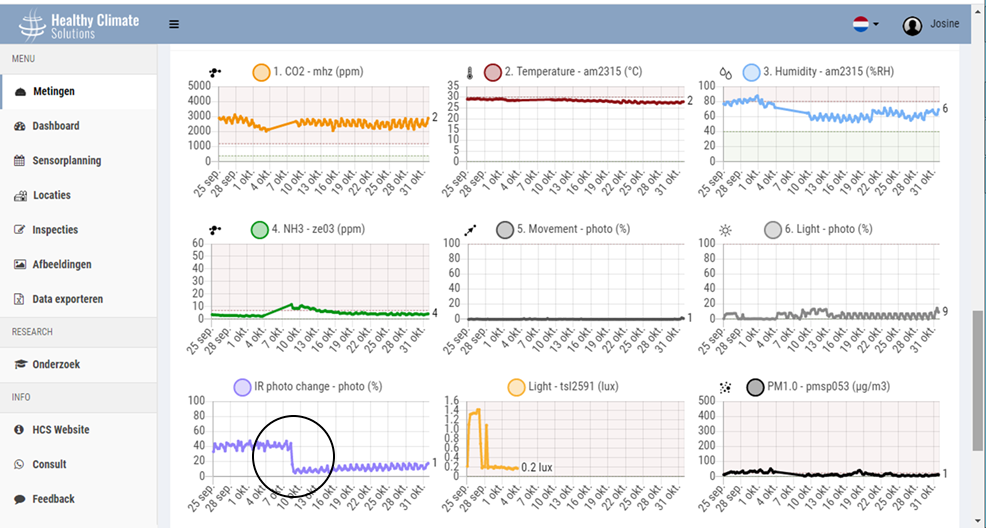Success stories
Curly tails

The transition to curly pig tails is, for some, a mission impossible. There are so many factors involved in tail biting. And even now, while still tail docking, farmers face difficulties they can’t seem to tackle. Sometimes though, there is a big leap forward. Like in the following farm.
In 2020, a farm where 230 piglets are weaned per week, struggled with tail biting after weaning*. The whole team made efforts to improve the life of their weaned piglets, but it seemed nothing was working out. Until the farm was monitored day and night, during 4 weeks.
Healthy Climate Solutions’ vet Josine analysed pictures and graphs of the weaned piglets. She and Chris, the vet of the farmer, discussed how the ventilation and the day and night rythm could be improved.

The farmer saw that improvements were needed and implemented time switches. The lights were now on from 7 am – 8 pm. The minimum ventilation % was adjusted: 1-2% higher.
Since then (November 2020; now it’s January 2021), tail biting has dropped from 10-30% to almost 0%. According to the veterinarian, rarely a week group is affected, and only 2-4% of those piglets has tail biting wounds. In countries where tail docking is already non-existing, there is an average of 5% tail biting in pigs. But all the other pigs have long, curly tails.
*piglets were, and still are, weaned at 27 days of age.
More success stories
Check our Dutch success stories page for more stories (in Dutch) and media links.
